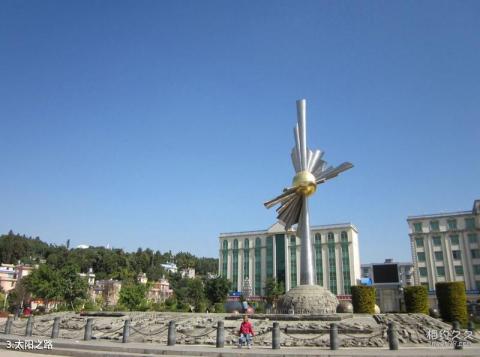
Introduction to the Road of the Sun: "Road to the Sun", the five pillars in the middle are the "Five Elements Pillars", and the five elements are gold, wood, water, fire and earth. The ancients believed that everything is composed of these five elements. The five elements are mutually reinforcing and inhibiting each other, which promotes the development of the material world. Just by looking at the totems on the stone pillars, you can tell that they are Canglong in the East, White Tiger in the West, Suzaku in the South, and Xuanwu in the North. "All things grow by the sun." The eastern pillar's attribute is wood, the southern climate is hot, and its attribute is fire; the western sun sets, and vegetation does not grow, and its attribute is gold; the northern climate is cold, and its attribute is water; the middle one is naturally the earth pillar. All things are born from the soil and die from the soil. Earth is the mother of all things. In addition, it is a manifestation of an ancient calendar. In ancient times, the Hani people used a calendar to record years and months to carry out agricultural activities, namely the "October" solar calendar. The year is divided into five seasons, namely wood, fire, metal, water and earth. A season has two months, a month has 36 days, and a year has 360 days. The remaining 5 days are used to celebrate the New Year. A new year is celebrated in the summer, which is what the Hani people often call the "June Year". It is called the "Kuzhaza Festival" in Hani language. It usually falls on the first pig day and rat day in May or June of the lunar calendar. It lasts for 2 to 3 days and is a festival to pray for a good harvest. A year celebrated in winter is the "October Year", also called "Beige Year". It usually starts on the first dragon day in October of the lunar calendar and lasts for 2 to 3 days. It is a festival used to celebrate the food harvest.
